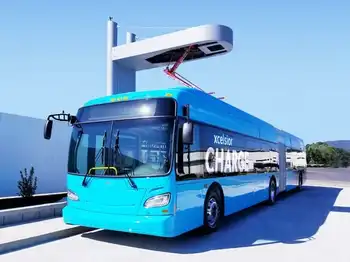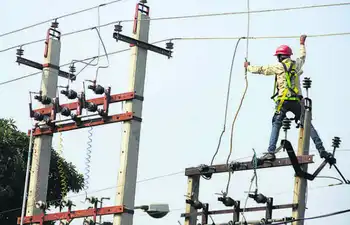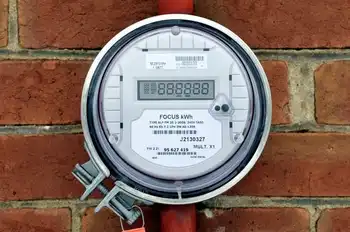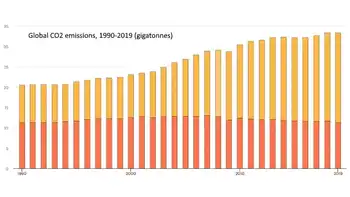Why your power bill suddenly went up $10.25
In other words, who knows what the future holds for Las Vegas?
Planning for growth used to be a sure bet here. But as the population flat lines and construction sites sit idle, planning has become a headache.
And in the case of NV Energy, it has set off a battle with the state’s consumer protectors, who contend the utility has inflated growth numbers to make a case for building and buying unneeded power plants that ratepayers — meaning just about everyone in Southern Nevada — will pay for.
NV Energy’s regulatory overseer, the Public Utilities Commission, weighed in and ordered the utility to revise its projections. The PUC said it wanted the most accurate growth forecasts possible so as to “not place unnecessary burden on ratepayers during this unprecedented economic downturn.”
The issue is complicated, but as every household and business in Southern Nevada can attest, it is hardly abstract.
Last month, the utility got permission from the PUC to raise its residential rates based on capital costs by 12.4 percent. The actual increase will be 6.9 percent, factoring in the lower cost of natural gas after a huge spike last summer, according to PUC calculations. That comes to an average of $10.25 a month.
NV Energy recently asked the PUC for an additional 4.2 percent rate increase for fuel costs.
Many ratepayers who have turned out for recent PUC consumer sessions say they find the escalating energy bills frightening and confusing.
Consumer advocates who study rates are alarmed that the requested increases appear likely to continue, and could be made worse if the utility overestimates NevadaÂ’s growth over the next few years.
Others say the utility is doing the best it can within NevadaÂ’s regulatory structure to keep pace with changing demographics.
To understand how we got to this place, it helps to turn the clock back.
On the afternoon of June 24, after NV Energy got permission from the PUC to raise rates, utility CEO Michael Yackira stood at a white erase board at his office and scribbled out the strategy he formulated when he was brought on to fix the ailing company in 2003.
At the time, Las Vegas was booming. To Yackira, the companyÂ’s direction was clear. NV Energy would buy and build its own plants rather than buy energy from other producers on a sometimes volatile open market.
Yackira listed on the board the power plants his utility has since added: Chuck Lenzie, Silverhawk, Clark, Walter M. Higgins.
The strategy was a reversal from the previous decade, when the utility — then known as Nevada Power — began selling off its assets in the midst of state deregulation. The company was set on that course until the energy crises of 2001. In California and other states, including Nevada, energy rates rose sharply as a result of manipulation of prices for power bought on open market.
Fearing the same could happen again, the Nevada Legislature decided to back out of deregulation, and instead encourage the development of new power plants to give the state long-term energy stability.
Yackira arrived on the scene shortly after the company managed to avoid bankruptcy. The PUC had ordered the utility to shoulder $437 million in losses from bad decisions in power purchases during the energy crisis, barring the utility from recouping that expense from ratepayers.
Yackira believed that the utility could recover financially by producing its own power, which also would ensure that ratepayers donÂ’t end up again being asked to pay high rates for energy on the open market.
The PUC cooperated, easing up on the company so that its bond ratings and stock market performance could improve, which would allow it to find capital for new projects.
The company’s shareholders make most of their profits on capital expenses. The more NV Energy builds and buys, the larger the base it can earn back profits on — as long as the PUC agrees the purchases will also benefit ratepayers.
“When I got here, I talked to a lot of people and I said we have an opportunity to get stability in rates and earn return,” said Yackira, who has a sly grin reminiscent of former British Prime Minister Tony Blair’s. “It wasn’t rocket science.”
Change came swiftly. In just five years, NV Energy went from generating about 30 percent of the power it distributes to generating more than 70 percent.
Now the utility wants to own the capacity to produce all of the power Nevada needs during even its most energy-heavy moments. Yackira says that plan is to allow NV Energy to provide the best price for consumers by having the flexibility to produce its own power or buy it on the market, if that is cheaper at any given moment.
Critics say that strategy could waste money by requiring ratepayers to pay for profits on expensive power plants that arenÂ’t used most of the year. They would sit idle much of the time because Nevada has one of the biggest differences of any state between average use and peak use, with the peaks coming in the summer, when air conditioners churn nonstop.
Nonetheless, the PUC agreed with most of NV EnergyÂ’s efforts to forge ahead with its plan.
Then the bottom fell out of the economy. In 2008, the Las Vegas population declined by 0.5 percent, or 10,000 people. Total electrical load in Southern Nevada fell 1 percent in 2008.
So the question of the moment is: Now what?
The major companies on the Strip have halted plans to build new hotel rooms after they add an expected 33,000 from 2008 through 2011.
Casino owners have been adamant that they don’t expect any new casinos in Las Vegas for at least 10 years after the current projects — including CityCenter, Cosmopolitan and the idle Fontainebleau — are completed.
Las Vegas Sands CEO Sheldon Adelson told the Wall Street Journal he plans instead to expand to other states, such as Massachusetts, Florida, Kentucky, Ohio and Texas.
NV Energy devised its growth forecasts a few months ago, relying in part on a study released in July 2008 by the UNLV Center for Business and Economic Research, which many businesses use for forecasting.
That study predicted Clark County would grow 4.2 percent in 2008, following the “relatively strong showing” of 4.4 percent in 2007.
In that version of the study, by the centerÂ’s associate director, Constant Tra, Las Vegas would hit its peak growth rate of 4.2 percent in 2009, and then grow by a smaller percentage each year until 2035.
NV Energy blended that forecast with another completed in November 2008 by the consulting group Global Insight.
Averaging the two, NV Energy determined that despite the recent downward trend, power use will grow by 1.1 percent, or by 1.9 percent, or by 2.9 percent, depending on which of three scenarios — low, base, or high — the PUC decides to accept. It assumes growth of 36 percent, 49 percent or 59 percent over 30 years, depending on the scenario.
The high and low forecast scenarios included more extensive assumptions this year, the company told the PUC.
Nonetheless, included in those projections are some assumptions that are almost certainly off the mark. For example, the utility assumes that Boyd GamingÂ’s $5 billion Echelon resort will open by the end of 2011. That project, which was originally to introduce nearly 5,000 hotel rooms, has been on hold since August and now has no time line for completion, according to a spokesman.
Also in that forecast was an outdated estimate of gross metropolitan product of $79.5 billion from November 2008. This had declined to $78.5 billion in February 2009, a difference of $956 million.
The use of the older data has prompted Consumer Advocate Eric Witkoski in the attorney generalÂ’s Consumer Protection Bureau to argue that NV Energy had used faulty growth projections to justify an out-of-control spending spree that ratepayers will have to cover.
“In the past, Las Vegas has grown and grown and grown and we didn’t worry because the load forecast was so big,” Witkoski said. “But now we might start adding plants we don’t need.”
He objected to a long-term agreement to acquire power from the 525-megawatt Apex Power Plant in northeast Clark County from 2010 to 2014, with an option to buy the plant. Leasing the power would cost ratepayers a minimum of $50 million to $100 million a year (the utility declined to give a more specific estimate).
That request came on the heels of a decision by the PUC to allow the utility to build a nearby 500-megawatt natural gas plant dubbed Harry Allen, costing $780 million.
WitkoskiÂ’s office had sued the PUC for allowing the construction of Harry Allen, arguing that NV Energy should instead have accepted an agreement to buy Apex for $200 million less.
But the utility says it needs both — regardless of the current economic fluctuations.
“As long as we have the population growth here in the county, it is needed,” said Roberto Denis, who is in charge of energy delivery for the company. “It’s a question of timing. It’s not one or the other. It’s one and when the other.”
But responding to the request to purchase power from Apex, the PUC agreed with WitkoskiÂ’s office that the utility did not use the correct data in making its load forecasts.
The utility, for example, should not have averaged out two population forecasts for 2011 and beyond, the PUC said.
NV Energy “does not explain why two purportedly inaccurate forecasts should be combined at all, let alone be considered accurate in the combined form,” the PUC wrote.
In addition, the PUC found that the utility did not include approximately $134 million from the federal economic stimulus that is designed to reduce energy use in Nevada, along with other money that could increase the load by creating or saving jobs.
The PUC ordered the utility to submit a new forecast.
For NV Energy, the order means that its contract to buy the Apex plant is voided. In addition, the utility told the PUC it would withdraw its three-year plan because of the growth projection problems. It will file a new one once it comes up with a new forecast.
The utility may solicit another long-term agreement with a power plant depending on what the revised forecast shows, Denis said.
Denis pointed out that other than Apex and Harry Allen, the utility does not have any major new electricity generation projects in the works.
Instead, its original three-year plan proposed a 250-mile $500 million transmission line that ties Northern and Southern Nevada. The line is intended to give the utility more flexibility in transmitting renewable energy. NV Energy has also proposed several smaller renewable energy projects costing $100 million and $325 million for energy efficiency and conservation.
To some observers, thatÂ’s a sign that the utility is adjusting to the new reality as fluidly as it can give the strict regulatory process.
Steve Wiel, Nevada representative for Southwest Energy Efficiency Project, pointed to the companyÂ’s delay of the Ely Energy Center, the 1,500-megawatt coal plant thatÂ’s indefinitely on hold.
“They submitted a plan that is virtually dependent on energy efficiency and renewable energy,” Wiel said. “In terms of corporate philosophy, that’s a major shift for this company.”
Still, the problem of planning for growth in Las Vegas remains tricky.
On July 1, UNLV released its revised forecast. Despite the recent experience from 2008 when the region declined by 10,000 people and the lack of clear signs of economic recovery, the new forecast indicated an expected growth of 3.4 percent for 2009. That would be a net gain of nearly 67,000 people. That growth will hold for 2010 and then begin to slacken, the study predicts.
Tra and Center director Keith Schwer explained that while they revised the forecast based on the delays in several hotel projects, they did not change the basic modeling assumptions. The model uses the past few years of historical data as a guide. Because until 2008 Las Vegas experienced enormous growth, the computer generated high numbers for 2009, 2010 and beyond.
Those numbers are intended for use by business and others to gauge long-term growth, Schwer and Tra said. They do not recommend looking at projections for any given year in the near-term, which could reflect what they say are merely short-term fluctuations.
“It changes each year, but the basic growth profile is that this is an area that will continue to attract population,” Schwer said. “The objective here is to plan over the long run. You would not want to make projections based on volatile cyclic behavior.”
Related News
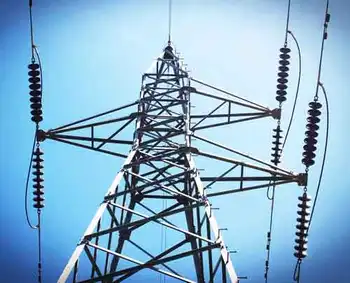
Scientists generate 'electricity from thin air.' Humidity could be a boundless source of energy.
WASHINGTON - Sure, we all complain about the humidity on a sweltering summer day. But it turns out that same humidity could be a source of clean, pollution-free energy, a new study shows.
"Air humidity is a vast, sustainable reservoir of energy that, unlike solar and wind, is continuously available," said the study, which was published recently in the journal Advanced Materials.
“This is very exciting,” said Xiaomeng Liu, a graduate student at the University of Massachusetts-Amherst, and the paper’s lead author. “We are opening up a wide door for harvesting clean electricity from thin air.”
In fact, researchers say, nearly any material…


